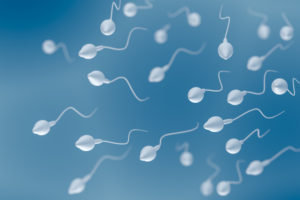Ejaculation And Prostate Cancer
Overview of prostate cancer
Prostate cancer accounts for approximately 15% of all new cancer diagnoses among men worldwide, and the burden of disease continues to increase globally.
Prostate cancer is cancer that occurs in the prostate, a small walnut-shaped gland in men that produces the seminal fluid that nourishes and transports sperm.
The prostate plays an important role in ejaculation. It produces the fluid in semen and helps push this fluid out when a man ejaculates.
Prostate cancer is the second most common type of cancer among men worldwide. Prostate cancer is rare among men younger than 40, with increased prevalence in patients older than 65. Family history and race are also risk factors associated with this disease.
About 1 man in 7 will be diagnosed with prostate cancer during his lifetime. Usually, prostate cancer grows slowly and is initially confined to the prostate gland, where it may not cause serious harm. However, while some types of prostate cancer grow slowly and may need minimal or even no treatment, other types are aggressive and can spread quickly.

Prostate cancer symptoms
Unfortunately, there usually aren’t any early warning signs of prostate cancer. That’s why screening for prostate cancer is such an important topic for all men. Contact your doctor for an evaluation if you experience any of the following:
- A need to urinate frequently, especially at night, sometimes urgently;
- Difficulty starting or holding back urination;
- Weak, dribbling, or interrupted flow of urine;
- Painful or burning urination;
- Difficulty in having an erection;
- A decrease in the amount of fluid ejaculated;
- Painful ejaculation;
- Blood in the urine or semen;
- Pressure or pain in the rectum;
- Pain or stiffness in the lower back, hips, pelvis, or thighs.
Risk factors:
- Age: Prostate cancer is rare in men younger than 40, but the chance of having prostate cancer rises rapidly after age 50. About 6 in 10 cases of prostate cancer are found in men older than 65;
- Race/Ethnicity. For reasons not yet determined, black men carry a greater risk of prostate cancer than do men of other races. In black men, prostate cancer is also more likely to be aggressive or advanced. Prostate cancer occurs less often in Asian-American and Hispanic/Latino men than in non-Hispanic whites. The reasons for these racial and ethnic differences are not clear;
- Family history. If men in your family have had prostate cancer, your risk may be increased. Men who have a relative with prostate cancer are twice as likely to develop the disease, while those with 2 or more relatives are nearly 4 times as likely to be diagnosed. The risk is even higher if the affected family members were diagnosed before age 65. Also, if you have a family history of genes that increase the risk of breast cancer (BRCA1 or BRCA2) or a very strong family history of breast cancer, your risk of prostate cancer may be higher.
Factors with a less clear effect on prostate cancer risk:
- Diet. Men who eat a lot of red meat or high-fat dairy products appear to have a slightly higher chance of getting prostate cancer. These men also tend to eat fewer fruits and vegetables. Doctors aren’t sure which of these factors is responsible for raising the risk;
- Obesity. Obese men diagnosed with prostate cancer may be more likely to have advanced disease that’s more difficult to treat;
- Hormonal levels and certain hormonal influences;
- Smoking. Some research has linked smoking to a possible small increased the risk of dying from prostate cancer, but this finding needs to be confirmed by other studies;
- Chemical exposure;
- Inflammation of the prostate;
- Sexually transmitted infections.

Prostate cancer prevalence
The number of men who are diagnosed with prostate cancer has increased quite a lot in recent years but is going down a bit now. Globally, approximately 899,000 new cases of prostate cancer are recorded each year. At least 30% of sufferers are over 50 years of age and more than 70% are over 80 years of age.
Screening has led to the more frequent detection of smaller cancer growths which wouldn’t have been found otherwise. This is because many smaller growths don’t cause any symptoms during a man’s lifetime. So, screening increases the number of cancer diagnoses.
The number of men who will be diagnosed with prostate cancer in the next ten years is for the men with current age 45, 4 out of 1000, for 55 years old, 25 out of 1000, and for over 65 years old, 59 out of 1000.
Whether and how prostate cancer continues to grow will vary from person to person. Most men who are diagnosed with prostate cancer have a good chance of recovery. This is because prostate cancer often only grows in the prostate (localized) and hasn’t spread to other parts of the body (metastasis). More than 90% of men who are diagnosed with prostate cancer are still alive five years later. If you only consider men who are diagnosed with localized prostate cancer, this figure even increases to 99%.
Diagnosis of prostate cancer
If your doctor thoughts that you may have prostate cancer, he will first ask you about the symptoms to get a rough idea of the problem. After this, one or more of the following examinations may be done:
- Palpation (feeling): Here the doctor gently inserts a finger into the anus to feel the size, hardness and surface of the prostate;
- PSA test: The PSA test is a blood test that looks for a certain protein known as “prostate-specific antigen”. This protein is produced inside the prostate. Small amounts of it enter the bloodstream. Having high levels of PSA might, but doesn’t necessarily, mean that someone has prostate cancer. Other things can lead to an increase in PSA levels too;
- Transrectal ultrasound (TRUS): Ultrasound is used to check the size and shape of the prostate gland. This involves gently inserting an ultrasound device about as wide as a finger into the rectum (the end part of the bowel);
- Tissue sample (biopsy): The only way to find out whether there actually is cancerous tissue in the prostate is by taking a tissue sample. Ten to twelve tissue samples are usually taken to be examined under a microscope, where they can be checked for cancer. The most commonly used approach is called fine needle aspiration. Like TRUS, this involves gently inserting an ultrasound device into the rectum. There is a fine needle inside the device. The needle is pushed through the wall of the rectum and into the prostate, where it is used to remove samples of tissue. The ultrasound helps guide the needle to the right place. This procedure is done using a local anaesthetic, or, in some rare cases, a brief general anaesthetic.
How can you treat prostate cancer?
The possible treatment options for prostate cancer will depend on various factors. These include:
- How much the cells have changed (how aggressive the tumour is);
- How much the tumour has grown or spread (the stage of prostate cancer);
- Your PSA levels;
- Your age, your health, and how important the pros and cons are to you.
Patients with cancer confined to the prostate can be treated by active surveillance, surgery or radiation therapy.
3D imaging reconstruction allows adapting the dose of radiotherapy to the volume of tissue to be treated and minimizing the adverse effects.
If a tumour is small, only inside the prostate, and not aggressive (low-risk prostate cancer), the following treatments are also possible:
- Active surveillance: Here the prostate cancer is simply monitored, and not treated, at first. It is often found that the cancer has still not advanced even years after it was diagnosed. Instead of having treatment, the prostate is checked regularly. Treatment attempting to get rid of the cancer (curative treatment) is only started if the tumour starts growing. The advantage of this approach is that the side effects of surgery or radiotherapy can be avoided if the tumour does not grow. One possible disadvantage: If the cancer does progress, sometimes it is discovered too late.
- Watchful waiting: This strategy also starts by only monitoring the prostate cancer at first. But if a tumour starts growing, only the symptoms are treated, not the tumour itself (this is known as “palliative care). This approach is mainly considered in older men, who are more fragile and may also have other medical problems. The risks and stress of surgery or radiotherapy could outweigh the possible benefits of this treatment.
There is no “right” or “wrong” treatment decision for men who have low-risk prostate cancer. The strategy that one man chooses will mainly depend on his personal preferences and values. Some will feel it is more important to avoid side effects like impotence or incontinence as much as possible. Others will want to be very sure that the cancer has been removed, so they are willing to accept the risks associated with treatment.

What is the link between ejaculation and prostate cancer?
Ejaculation is the discharge of semen from the male reproductory tract, usually accompanied by orgasm. It is the final stage and natural objective of male sexual stimulation, and an essential component of natural conception.
Over the years, there’s been growing evidence of a link between ejaculation and lower chances of prostate cancer. But the 2016 results of a major study made the strongest case yet. The researchers asked men to answer questions about how often they ejaculated. How didn’t matter–sex, masturbation, or wet dreams were all included. Then they tracked almost 32.000 of these men for 18 years.
The researchers found that guys who did it the most (at least 21 times a month) had about a 20% lower chance of prostate cancer, compared with those who did it less (4 to 7 times a month). That was true in several age groups.
Based on this premise, a prospective report from the Health Professionals Follow-up Study (HPFS) cohort published in 2004 found a statistically significant inverse association between monthly ejaculation frequency and prostate cancer risk based on 8 years of follow-up.
Over follow-up, a total of 3.839 cases of prostate cancer were diagnosed. The frequency of ejaculation per month decreased with age. The proportion of men reporting an average frequency of 13 or more ejaculations per month was 57% aged 20-29 but dropped to 32% at age 40-49.
Excluding men with erectile dysfunction, compared with men who ejaculated four to seven times per month:
- There was a 20% decreased risk of prostate cancer for those who ejaculated 21 times or more per month aged 20-29, (adjusted hazard ratio (aHR) 0.80, 95% confidence interval (CI) 0.69 to 0.92);
- There was an 18% decreased risk of prostate cancer in ages 40-49 for those who ejaculated 21 times or more per month, (aHR 0.82, 95% CI 0.70 to 0.96);
- There was a 26% reduction in risk of prostate cancer for men aged over 50 who had ejaculated 21 times or more per month in the previous year, (aHR 0.74, 95% CI 0.58 to 0.94);
- There was also a decreased risk of prostate cancer in ages 40-49 for those who ejaculated 13-20 times per month (aHR 0.81, 95% CI 0.72 to 0.90);
- There were similar yet smaller reductions in risk at all ages for men ejaculating 13 or more times per month.
A 2008 study found that frequent masturbation was only linked with a decreased risk of prostate cancer in men over 50. Researchers in this study found that men in their 20s and 30s who ejaculated more often were at an increased risk of prostate cancer.
The exact number of times didn’t matter. Basically, the more men ejaculated in a month, the less likely they were to get prostate cancer.
Why might ejaculation help prostate health? Experts aren’t sure. Some believe that it can flush out harmful chemicals that might build up in semen.
True facts about ejaculation and prostate cancer
- There’s no proof that ejaculating more actually causes lower chances of prostate cancer. For now, doctors just know they’re connected. It may be that men who do it more tend to have other healthy habits that are lowering their odds;
- Ejaculation doesn’t seem to protect against the most deadly or advanced types of prostate cancer. Experts don’t know why;
- Scientists don’t know if ejaculation during sex vs. masturbation has the same benefits. Some research has found that the makeup of semen is different for each. For example, semen during sex has higher levels of sperm and some chemicals. It’s possible that these could make a difference in a man’s odds of having prostate cancer;
- Not all studies have found a benefit. The 2016 study got attention because of its size (almost 32,000 men) and length (18 years). But some smaller studies have not shown the same good results. A few even found that some men, specifically younger men, who masturbated more had slightly higher chances of prostate cancer. Some researchers wonder if a man’s age may affect whether more ejaculation helps.

Prostate cancer treatments that can influence orgasms and ejaculation
- Hormone therapy can change the intensity of orgasms. Men who have had hormone therapy or radiotherapy might produce less semen or no semen (a dry orgasm).
- You no longer ejaculate semen if you have had a radical prostatectomy. This is because the prostate gland and 2 glands called the seminal vesicles are removed. The seminal vesicles make the liquid part of the sperm. Your testicles will still make sperm cells, but they will be reabsorbed back into your body. You are still able to have an orgasm, but it will be a dry orgasm. Some men say that a dry orgasm without semen feels normal. But other men find that their orgasm is less intense and pleasurable. The loss of a visible ejaculation can be significant for some men and their partners. Some men say that it feels different, but they have managed to find ways to adjust to this.
- If you are used to having anal sex and you are the receiving partner, surgery to remove the prostate gland can change this experience. Some men can find the penis rubbing against the prostate gland pleasurable. So, if the prostate gland is no longer there, anal sex might feel different. You could look at different ways of enjoying sex and being intimate. Counselling and sex therapy might help.
Conclusion
Researchers are still studying the connection between ejaculation and prostate health.
Radical prostatectomy is one of the most common surgical approaches to treating prostate cancer in men. This option for treatment removes all or part of the prostate gland and is commonly chosen when the cancer is believed to be confined to just the prostate. As with all options, there is a level of risk associated with a prostatectomy. There are also a number of potential side effects that can range from mild to severe.
Among patients who opt for the surgical approach to treating prostate cancer, there are two major side effects to be aware of. The inability to control urine, urinary incontinence and trouble getting and keeping an erection are the most common complications that can occur post-op.
References
- https://www.europeanurology.com/article/S0302-2838(16)00377-8/abstract/ejaculation-frequency-and-risk-of-prostate-cancer-updated-results-with-an-additional-decade-of-follow-up;
- https://www.medicalnewstoday.com/articles/319536.php;
- https://www.mayoclinic.org/diseases-conditions/prostate-cancer/symptoms-causes/syc-20353087;
- https://www.pcf.org/about-prostate-cancer/what-is-prostate-cancer/prostate-cancer symptoms-signs/;
- https://www.ncbi.nlm.nih.gov/pubmedhealth/PMH0073049/;
- https://www.webmd.com/prostate-cancer/ejaculation-prostate-cancer-risk#1;
- Leitzmann MF, Platz EA, Stampfer MJ, Willett WC, Giovannucci E. Ejaculation frequency and subsequent risk of prostate cancer. JAMA. 2004 Apr 7;291(13):1578-86. PubMed PMID: 15069045. DOI: 10.1001/jama.291.13.1578;
- https://www.nhs.uk/news/cancer/frequent-ejaculation-may-decrease-prostate-cancer-risk/;
- https://www.medicalnewstoday.com/articles/319536.php;
- https://www.cancerresearchuk.org/about-cancer/prostate-cancer/practical-emotional support/sex-relationships/orgasm-ejaculation.

